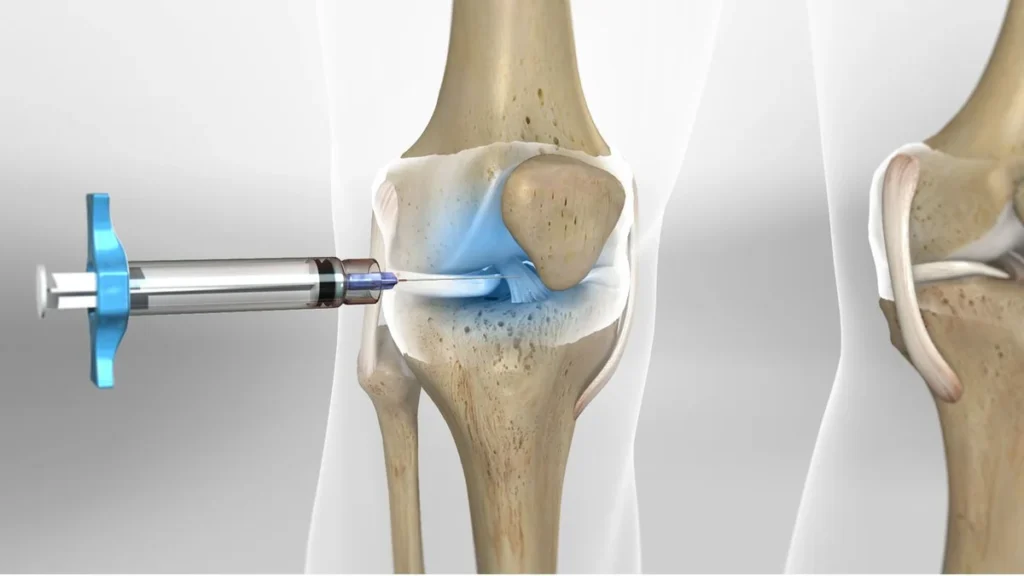In this article, we will talk about De Quervain’s Syndrome and its Symptoms and Treatment Methods.
Pain in the Wrist and Thumb in Gamers and Others
If you are a gamer and spend a lot of time playing computer games, you might have experienced pain in your wrist and thumb. Sometimes, this pain can become severe enough to limit the free movement of your wrist and thumb. This condition is known as De Quervain’s syndrome.

However, this problem is not exclusive to gamers. Anyone who exerts excessive pressure on their wrist and thumb can face this issue. In this article, we will examine the details of De Quervain’s syndrome.
What is De Quervain’s Syndrome?
De Quervain’s syndrome refers to severe pain experienced in the area around the wrist and thumb. This pain is caused by swelling and inflammation of the tendons or their sheaths in this area. The pain usually intensifies when making a fist, lifting objects, or rotating the wrist.
If you want to know more about De Quervain’s syndrome, its management, and treatment, continue reading this article. We have extensively addressed this issue at the Iran Height Increase Clinic and explained ways to combat it.
Symptoms of De Quervain’s Syndrome
De Quervain’s syndrome is characterized by pain and discomfort in the area around the base of the thumb, which increases with the movement of the wrist and thumb. The main symptoms of this condition include:
- Pain near the base of the thumb
- Swelling in the same area
- Stiffness and difficulty in moving the thumb and wrist, especially when gripping or pressing objects
- A feeling of stickiness in the thumb during movement
If left untreated, the pain may spread to the thumb and forearm and intensify with any wrist movement for gripping or lifting objects.
Causes of De Quervain’s Syndrome
To understand the cause of De Quervain’s syndrome, attention must be paid to the muscular and skeletal structure of the wrist and its components. Tendons, which are rope-like structures that connect muscles to bones, play a significant role in the development of this condition.
When you grip or press something, two tendons in the wrist and thumb glide through a tunnel that connects them to the base of the thumb. This movement and pressure can lead to swelling and inflammation in this area, causing De Quervain’s syndrome.
Factors and Diagnosis of De Quervain’s Syndrome
Causes of De Quervain’s Syndrome: De Quervain’s syndrome occurs when repetitive and continuous movements cause irritation and inflammation of the tendons around the wrist and thumb. Injury or trauma to this area can also lead to the formation of scar tissue and restriction in tendon movement. Underlying diseases such as rheumatoid arthritis can also contribute to this syndrome.
De Quervain’s syndrome is more common in individuals between 30 to 50 years of age and pregnant women. People who, due to their job or daily activities, exert a lot of pressure on their wrists and thumbs are also at risk.
Diagnostic Methods: The doctor diagnoses De Quervain’s syndrome by thoroughly assessing the condition of the hand and examining pain and discomfort associated with wrist and thumb movement. One common diagnostic method is the Finkelstein test, in which the doctor asks the patient to bend their thumb and then bend the wrist towards the little finger. If this movement increases pain in the wrist and around the thumb, it is a sign of De Quervain’s syndrome.
Usually, this condition can be diagnosed through physical examination and patient symptoms, and there is no need for specific imaging tests.
Treatment Methods for De Quervain’s Syndrome
Home Treatments:
- Rest: Using a brace or bandage to stabilize the thumb and allow the injured tendon to rest.
- Activity Reduction: Avoiding repetitive movements and stress on the tendons.
- Cold Compress: Using ice to reduce inflammation and pain.
Medication:
- Pain Relievers: Using medications like ibuprofen or naproxen to reduce pain and inflammation.
- Corticosteroid Injections: If symptoms worsen, inject medication into the affected area to quickly reduce inflammation.
Physiotherapy:
- Exercise: Specific exercises to strengthen muscles and reduce pain.
- Education: Guidance on lifestyle adjustments to reduce pressure on the tendons.
Surgical Treatment: In cases where non-surgical treatments are ineffective, surgery is performed. The surgeon opens the tendon sheath to reduce pressure on the tendon and facilitate easier movement.
Post-Surgery:
- Rest and Rehabilitation: Following doctor’s instructions and physiotherapy for quicker recovery.
- Strengthening Exercises: Performing exercises to strengthen muscles and prevent recurrence.
Important Note: Begin treatment promptly and follow instructions precisely for faster recovery. If symptoms occur during pregnancy, they usually improve after the end of pregnancy or breastfeeding.
Conclusion
De Quervain’s syndrome results from excessive pressure and stress on the wrist and thumb. This injury is usually caused by repetitive movements and excessive pressure in these areas, leading to severe pain and movement restriction. The treatment of De Quervain’s syndrome varies depending on the severity of symptoms and the extent of damage. Additionally, prevention by reducing pressure and stress on the wrist and thumb is an effective way to avoid this condition.

To make an appointment or get an online consultation with Dr. Nader Motallebi Zadeh, Limb lengthening surgeon, proceed here.



